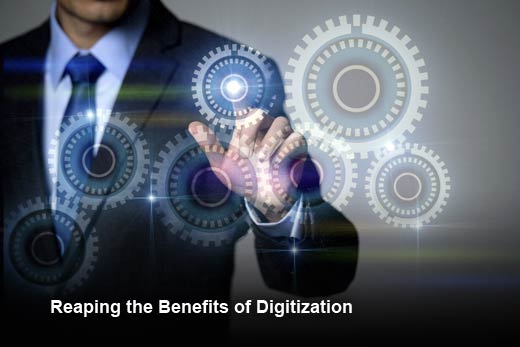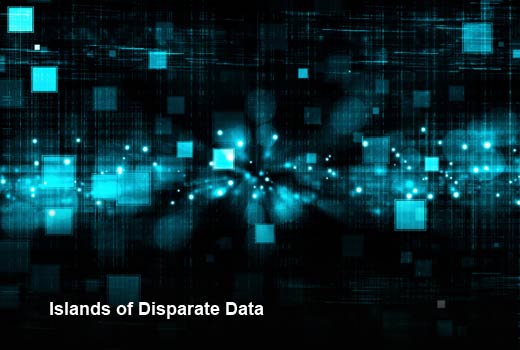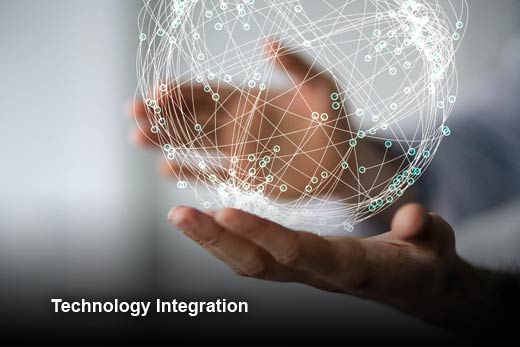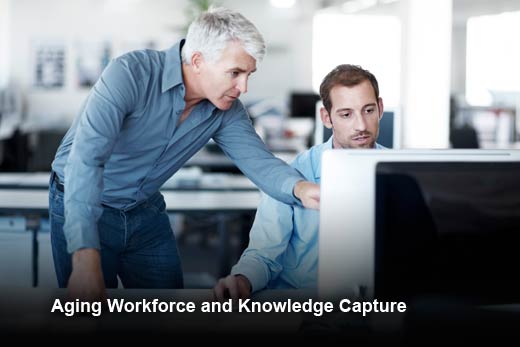Digitizing operations has become an imperative for the modern industrial corporation. Technological progress in computing, sensing, storage and communications technologies has made it easier, faster and cheaper for organizations to accelerate adoption of Big Data and asset management technologies.
However, with the growing volume of data from assets and operations, there are significant challenges that asset-centric companies need to overcome to reap the benefits of digitization. In this slideshow, Shefali Patel, director of strategy and marketing, GE Digital, discusses the challenges inherent in working with large volumes of data and how to successfully leverage enterprise data.
Reaping the Benefits of Digitization
Click through for more on the challenges organizations face when working with large volumes of disparate data and how to reap the benefits of digitization, as identified by Shefali Patel, director of strategy and marketing, GE Digital.
Digital Disruption
With the cost of computing, bandwidth and sensors decreasing multifold in recent years, there has been an explosion of embedded devices that can communicate with one another and churn out volumes of data. Smart objects linked through wireless networks that carry information are forming a system called the Internet of Things (IoT), which is challenging business models built on static and rigid information architectures.
The nature of how work gets done today is also evolving with demographic, globalization and technology changes. The composition of today’s workforce is increasingly diverse, with digital-savvy millennials working side-by-side with more experienced knowledge workers.
As IoT technologies further penetrate the workplace, they will create new ways of organizing work and dispersing knowledge across distributed teams. Individually these trends are a force. But together, they are transforming industries and economies. They also create new challenges for business leaders. They can be grouped into technology, business and organizational challenges.
Islands of Disparate Data
Data islands are created as a byproduct of operational and project moment-in-time decisions not made in the context of a larger data strategy. Layering of legacy systems conjoined with newer technologies and a lack of governance for data systems also results in data-related islanding of internal departments and work groups.
This can lead to a limited purview and inhibit collaboration. Data gets siloed, whether it is enterprise data, equipment data inside an organization, or data across different organizations. This fragmentation makes data discovery difficult and presents complex technical and organizational challenges.
When the data is scattered throughout manufacturing plants and the enterprise, integrating and analyzing it manually becomes resource-intensive and tedious. To extract meaning and value from data, new systems are required to handle the challenges posed by the volume, velocity, and variety of these Big Data sets.
Technology Integration
The management of industrial technology has traditionally been split between two separate fields: information technology (IT) and operations technology (OT). IT worked from the top down, deploying and maintaining data-driven infrastructure largely to the management side of business. OT built from the ground up, starting with machinery, equipment and assets, before moving up to monitoring and industrial-control systems.
With smarter machines, Big Data and the industrial Internet, the worlds of IT and OT are converging. Traditional enterprise data management such as ERP or CRM is being dwarfed by operations data due to sheer volume and variety. But most of this data is still in the dark.
There is a need to link analytical systems to operational systems. Today most business analytics do not support any connection back to the originating systems of data — analytics are on an island as well, inhibiting the ability to take action in a reliable and effective way due to the onus on the individual to connect the worlds in their brain and connect the systems and workflows via their own initiative.
IT and OT, developed separately with independent systems architectures, need to come together and find common ground to develop a new infrastructure.
Asset-Level Visibility
Improved capacity utilization is one of the great benefits of state-of-the art information systems. To achieve production targets, operators need to be able to monitor assets in real time and ensure all assets (across all plants) are performing at the optimal level. They need increased visibility and better insights that can be acted upon. This enables them to detect anomalies and fix issues before they occur, reducing unplanned downtime.
Asset performance management and operations optimization software can provide them with answers on what equipment is most important, how it should be maintained and how unexpected failures can be avoided.
Aging Workforce and Knowledge Capture
An aging workforce is impacting a number of industries. Retirement of experienced workers is expected to create a skills gap. While younger generations of workers will bring new skills, it is crucial that the knowledge and experience accumulated by more senior workers is captured and made accessible to the new workforce. Inability to institutionalize this knowledge can be detrimental to the apprenticeship of younger employees. Preparing for this impending change by using digital technologies can ease the transition.
Digital Privacy Risks
As billions of assets get smarter, networked and store information on the cloud, they will be exposed to digital privacy risks. Just in the last year, there have been several cases of data breaches causing significant damage to all parties involved (companies and their supply chains, as well as consumers).
Cyber attacks pose a range of threats, from personal devices to corporate IT systems — making individuals and institutions vulnerable to financial and physical harm. There is growing awareness and paranoia among stakeholders, and an urgency to mitigate these risks. Vendors are deploying solutions to prevent these cyber events and protect against digital crime.
As companies invest in digital technologies, cybersecurity capabilities must be part of the selection criteria.
Optimizing Assets and Operations
Many industrial companies have already started their digital journey toward industrial Internet maturity. Reaching maturity involves five stages with corresponding technology components that allow an enterprise to 1) connect, 2) monitor, 3) analyze, 4) predict and 5) optimize their assets and operations.
This can be accomplished on-premise and in the cloud, depending on the current configuration of your data architecture. The first step is to connect all critical assets across the enterprise. This requires a highly scalable and fault-tolerant software system that enables cost-effective data storage, abstraction, visualization and analytics.
In order to exploit the fast-moving technology wave of the industrial Internet, companies need to think strategically and holistically about the foundational elements of their data architecture and asset management approach.
On-ramping with cost-effective data management technologies that can aggregate, store, analyze and visualize terabytes of data pulsing through assets and systems across the enterprise is a critical foundational step.
They give business leaders and operators a single source of truth to improve asset-level visibility, cross-operation performance, knowledge capture and employee collaboration. Having these capabilities in the field or in the cloud enables the enterprise to extract value from insights that would have otherwise remained hidden within islands of dark and disparate data.










